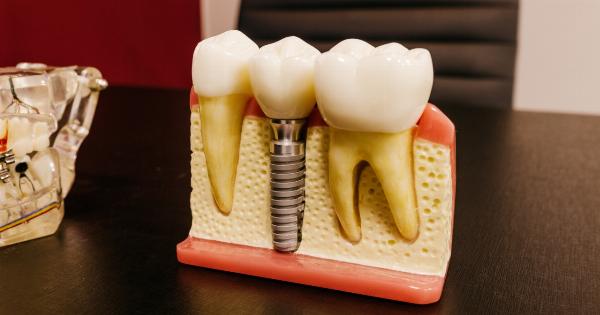Children can experience various oral health issues that require attention and treatment. This article focuses on three common conditions affecting children’s oral health – dry mouth, fungi, and stomatitis.
Read on to learn about effective treatments for these conditions, their causes, symptoms, and practical tips to alleviate discomfort.
What is Dry Mouth?
Dry mouth, also known as xerostomia, occurs when there is insufficient saliva production in the mouth. Saliva plays a vital role in maintaining oral health by lubricating the mouth, aiding digestion, and controlling the growth of bacteria.
When saliva production decreases, it can lead to several discomforting symptoms.
Causes of Dry Mouth
Dry mouth in children can be caused by various factors, including:.
- Medications: Certain medications, like antidepressants and antihistamines, may reduce saliva production.
- Dehydration: Inadequate fluid intake or excessive sweating can cause dry mouth.
- Mouth-breathing: Breathing through the mouth, especially during sleep, can contribute to dry mouth.
- Underlying health conditions: Dry mouth can be a symptom of medical conditions such as diabetes, Sjögren’s syndrome, or autoimmune disorders.
Symptoms of Dry Mouth
Children with dry mouth may experience the following symptoms:.
- Sticky or dry feeling in the mouth
- Frequent thirst
- Bad breath
- Trouble swallowing or speaking
- Cracked lips or corners of the mouth
- Mouth sores or infections
Tips for Managing Dry Mouth
To help alleviate dry mouth symptoms in children, consider the following tips:.
- Encourage regular fluid intake throughout the day
- Limit the consumption of sugary and acidic foods and beverages
- Promote good oral hygiene by brushing with fluoride toothpaste and flossing daily
- Suggest using saliva substitutes or moisturizing mouth sprays
- Keep indoor humidity levels optimal to prevent drying of the mouth
Treating Fungi in Children
Fungal infections in children’s mouths can cause discomfort and affect overall oral health. The most common fungal infection is oral thrush, caused by the overgrowth of a fungus called Candida albicans.
Symptoms of Fungal Infections
Signs that a child may have a fungal infection in their mouth include:.
- White patches on the tongue, gums, or inner cheeks
- Redness or soreness in the affected areas
- Pain or difficulty swallowing
- Loss of taste
- Bleeding or cracking when the patches are scraped
Treatment Options for Fungal Infections
To treat fungal infections in children’s mouths, healthcare professionals may recommend:.
- Antifungal medications: These may be prescribed in the form of oral drops, lozenges, or gels to eradicate the fungal overgrowth.
- Proper oral hygiene: Regularly brushing the teeth and tongue with a soft toothbrush and using an antimicrobial mouthwash can help prevent further fungal growth.
- Adjusting medication: In cases where the use of certain medications is causing the fungal infection, a healthcare professional may suggest an alternative.
Understanding Stomatitis in Children
Stomatitis refers to the inflammation of the oral mucosa and can manifest in different forms. The condition can cause pain, discomfort, and difficulty eating or drinking.
Types of Stomatitis
There are several types of stomatitis that can affect children, including:.
- Aphthous stomatitis: Commonly known as canker sores, these small, painful ulcers often occur inside the mouth.
- Herpetic stomatitis: Caused by the herpes simplex virus, herpetic stomatitis presents as small blisters on the lips, gums, and inner cheeks.
- Allergic stomatitis: A reaction to certain allergens, such as foods, medications, or oral care products, resulting in oral inflammation.
Symptoms and Treatment for Stomatitis
The symptoms and treatment for stomatitis vary depending on the type. General symptoms of stomatitis may include:.
- Ulcers or blisters in the mouth
- Pain or discomfort while eating or drinking
- Redness and swelling in the affected areas
- Fever or general malaise
Treatment for stomatitis may involve:.
- Topical oral gels or ointments to relieve pain and reduce inflammation
- Antiviral medications for herpetic stomatitis
- Avoiding known triggers or allergens
- Maintaining good oral hygiene
- Using pain-relieving mouth rinses or gels as recommended by a healthcare professional
It is always important to consult a healthcare professional for an accurate diagnosis and appropriate treatment plan for children with stomatitis.
By understanding the causes, symptoms, and treatment options for dry mouth, fungal infections, and stomatitis in children, parents and caregivers can ensure proper oral health and comfort for their little ones.
Encouraging regular dental check-ups and promoting good oral hygiene practices can also help prevent these conditions from occurring or worsening.























